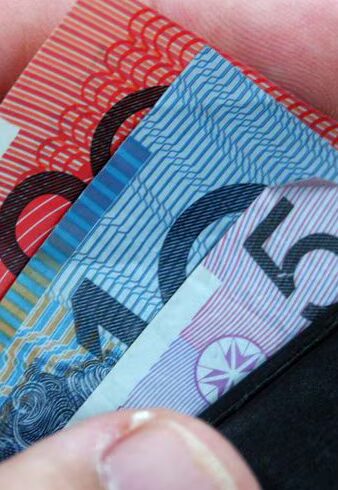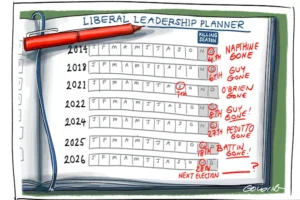
Australian Bureau of Statistics (ABS) figures show workers received an average base pay increase of 3.4 per cent over the year to September, in line with the previous quarter and economist forecasts.
That pay rise has again slightly outpaced consumer price inflation, which rose to 3.2 per cent over the same period.
It means the average worker saw a small increase in their purchasing power, a point highlighted by the Treasurer Jim Chalmers and Employment Minister Amanda Rishworth in a joint statement.
“Annual real wages have now grown for eight consecutive quarters,” they noted.
“This is now the longest period of consecutive annual real wage growth in almost a decade.”
Inflation surges to 3.2pc in September quarter
However, this period of real wages growth may soon be over.
The annual pay increase was slightly down on the same period a year earlier, when workers saw their base pay packets rise 3.5 per cent on average.
JP Morgan economist Tom Kennedy said workers could expect to see their real wages — adjusted for inflation — fall again next year.
“The recent upturn in inflation means that real wage growth has also turned lower, running at just +0.2 per cent and likely to turn negative in the coming quarters as headline inflation approaches 3.5 per cent,” he said.
This tallies with recent Reserve Bank forecasts in its Statement on Monetary Policy, which also tipped inflation to outpace pay rises for much of 2026.
Public sector drives wage growth
Workers in the public sector, especially state government employees, earned more than those in the private sector. (Unsplash: Glenn Carstens-Peters)
This year’s pay rise was also stronger for workers in the public sector (3.8 per cent) compared to the private sector (3.2 per cent).
The head of prices statistics at the ABS, Michelle Marquardt, said those mostly went to state, not federal or local, government employees.
“State government pay rises contributed 82 per cent of public sector wage growth this quarter,” Ms Marquardt said.
Abhijit Surya, from Capital Economics, said the relative weakness of private sector pay rises, which were propped up by an increase in minimum and award wages, should comfort the Reserve Bank that wage rises are not a major contributor to inflation pressures.
“Encouragingly, though, wage growth for workers on individual arrangements, which tends to be more sensitive to cyclical conditions, did ease slightly, from 3.1 per cent to 3 per cent,” he noted.
“Looking further ahead, our composite labour market continues to suggest that wage growth will fall to around 3 per cent in the coming quarters, as the [Reserve] Bank is expecting.
“With productivity growth in the midst of a cyclical rebound, unit labour cost growth should ease in tandem, helping to tame services inflation.”
Betashares chief economist David Bassanese agreed that the Reserve Bank would take some comfort from the data.
“Today’s relatively benign September quarter wage cost index report provides some reassurance that the labour market is not overly hot and that unemployment accordingly does not need to rise significantly further to keep inflation in check,” he said.
Wage growth peaked at 4.2 per cent in the December quarter of 2023, after remaining stuck below 2.5 per cent from the start of 2015 to early 2022.
The Wage Price Index (WPI) measures base pay, and does not include additional payments like overtime and bonuses.
The ABS published a second set of monthly numbers today, estimating the total wages and salaries paid by employers to their staff in September.
Payments totalled $108.8 billion, driven higher by bonuses in the mining, utilities, retail, media and financial services sectors, which are often paid in September, in response to financial year targets.
However, the 5.3 per cent annual growth in total wages and salaries paid to employees was down from the 6.1 per cent rise recorded over the year to September 2024.





